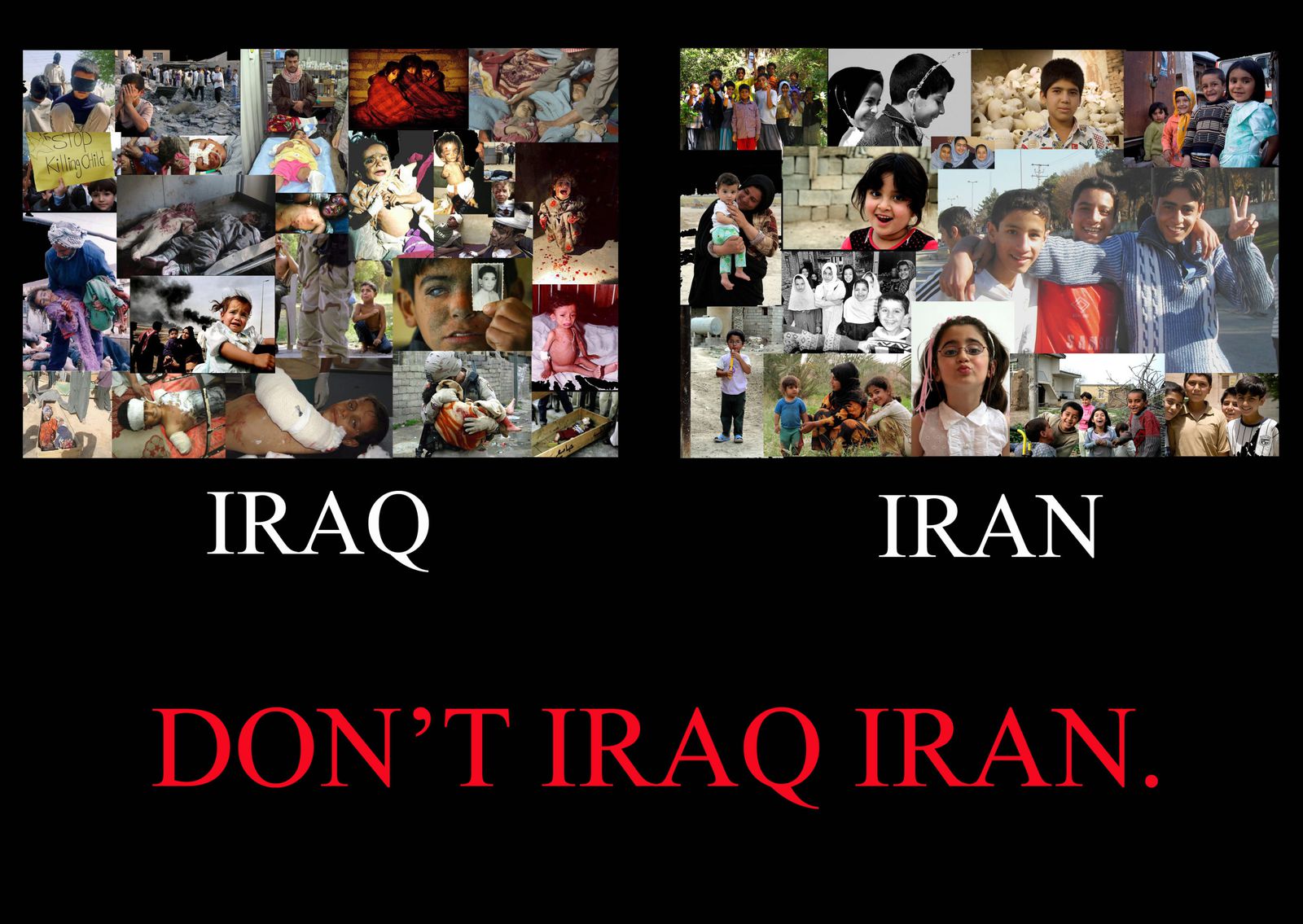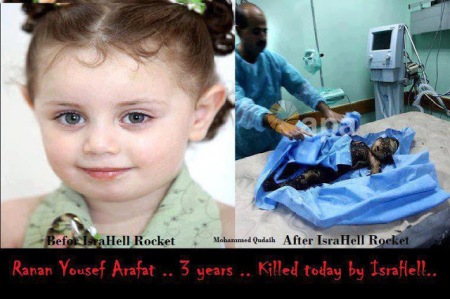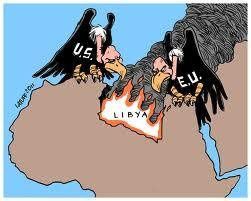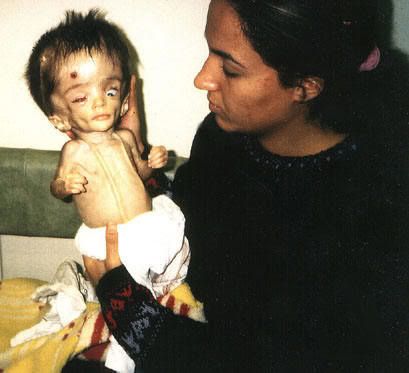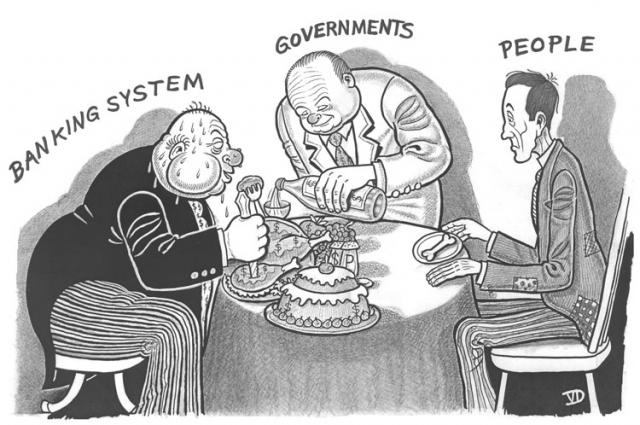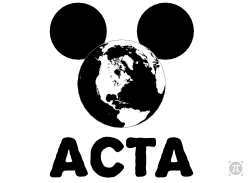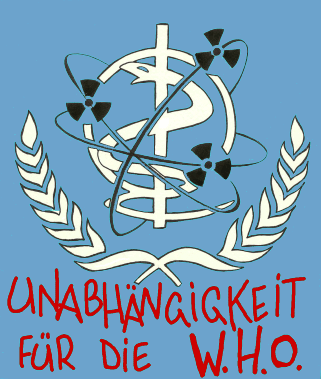The Torture Memos
Torture has been routine practice from the early days of the Republic
By Noam Chomsky
Chomsky's ZSpace page

The torture memos released by the White House in April elicited shock, indignation, and surprise. The shock and indignation are understandable—particularly the testimony in the Senate Armed Services Committee report on the Cheney-Rumsfeld desperation to find links between Iraq and al-Qaeda, links that were later concocted as justification for the invasion, facts irrelevant. Former Army psychiatrist Major Charles Burney testified that "a large part of the time we were focused on trying to establish a link between Al Qaeda and Iraq. The more frustrated people got in not being able to establish this link...there was more and more pressure to resort to measures that might produce more immediate results"—that is, torture.
The McClatchy press reported that a former senior intelligence official familiar with the interrogation issue added that "The Bush administration applied relentless pressure on interrogators to use harsh methods on detainees in part to find evidence of cooperation between al Qaida and the late Iraqi dictator Saddam Hussein's regime.... [Cheney and Rumsfeld] demanded that the interrogators find evidence of al Qaida-Iraq collaboration.... 'There was constant pressure on the intelligence agencies and the interrogators to do whatever it took to get that information out of the detainees, especially the few high-value ones we had, and when people kept coming up empty, they were told by Cheney's and Rumsfeld's people to push harder'." These were the most significant revelations, barely reported.
While such testimony about the viciousness and deceit of the Administration should indeed be shocking, the surprise at the general picture revealed is nonetheless surprising. A narrow reason is that even without inquiry, it was reasonable to suppose that Guantanamo was a torture chamber. Why else send prisoners where they would be beyond the reach of the law—incidentally, a place that Washington is using in violation of a treaty that was forced on Cuba at the point of a gun? Security reasons are alleged, but they are hard to take seriously. The same expectations held for secret prisons and rendition, and were fulfilled.
A broader reason is that torture has been routine practice from the early days of the conquest of the national territory, and then beyond, as the imperial ventures of the "infant empire"—as George Washington called the new Republic—extended to the Philippines, Haiti, and elsewhere. Furthermore, torture is the least of the many crimes of aggression, terror, subversion, and economic strangulation that have darkened U.S. history, much as in the case of other great powers. Accordingly, it is surprising to see the reactions even by some of the most eloquent and forthright critics of Bush malfeasance: for example, that we used to be "a nation of moral ideals" and never before Bush "have our leaders so utterly betrayed everything our nation stands for" (Paul Krugman). To say the least, that common view reflects a rather slanted version of history.
Occasionally the conflict between "what we stand for" and "what we do" has been forthrightly addressed. One distinguished scholar who undertook the task is Hans Morgenthau, a founder of realist international relations theory. In a classic study written in the glow of Camelot, Morgenthau developed the standard view that the U.S. has a "transcendent purpose": establishing peace and freedom at home and indeed everywhere, since "the arena within which the United States must defend and promote its purpose has become world-wide." But as a scrupulous scholar, he recognized that the historical record is radically inconsistent with the "transcendent purpose" of America.
We should not, however, be misled by that discrepancy, Morgenthau advises: in his words, we should not "confound the abuse of reality with reality itself." Reality is the unachieved "national purpose" revealed by "the evidence of history as our minds reflect it." What actually happened is merely the "abuse of reality." To confound abuse of reality with reality is akin to "the error of atheism, which denies the validity of religion on similar grounds." An apt comparison.
The release of the torture memos led others to recognize the problem. In the New York Times, columnist Roger Cohen reviewed a book by British journalist Geoffrey Hodgson, who concludes that the U.S. is "just one great, but imperfect, country among others." Cohen agrees that the evidence supports Hodgson's judgment, but regards it as fundamentally mistaken. The reason is Hodgson's failure to understand that "America was born as an idea, and so it has to carry that idea forward." The American idea is revealed by America's birth as a "city on a hill," an "inspirational notion" that resides "deep in the American psyche"; and by "the distinctive spirit of American individualism and enterprise" demonstrated in the Western expansion. Hodgson's error is that he is keeping to "the distortions of the American idea in recent decades," the "abuse of reality" in recent years.
A Legacy of Ghastly Crimes
Let us then turn to "reality itself": the "idea" of America from its earliest days. The inspirational phrase "city on a hill" was coined by John Winthrop in 1630, borrowing from the Gospels, and outlining the glorious future of a new nation "ordained by God." One year earlier his Massachusetts Bay Colony established its Great Seal. It depicts an Indian with a scroll coming out of his mouth. On it are the words "Come over and help us." The British colonists were thus benevolent humanists, responding to the pleas of the "miserable" natives to be rescued from their bitter pagan fate.
The Great Seal is a graphic representation of "the idea of America," from its birth. It should be exhumed from the depths of the psyche and displayed on the walls of every classroom. It should certainly appear in the background of all of the Kim Il-Sung-style worship of the savage murderer and torturer Ronald Reagan, who blissfully described himself as the leader of a "shining city on the hill" while orchestrating ghastly crimes and leaving a hideous legacy.
This early proclamation of "humanitarian intervention," to use the currently fashionable phrase, turned out to be very much like its successors, facts that were not obscure to the agents. The first Secretary of War, General Henry Knox, described "the utter extirpation of all the Indians in most populous parts of the Union" by means "more destructive to the Indian natives than the conduct of the conquerors of Mexico and Peru." Long after his own significant contributions to the process were past, John Quincy Adams deplored the fate of "that hapless race of native Americans, which we are exterminating with such merciless and perfidious cruelty...among the heinous sins of this nation, for which I believe God will one day bring [it] to judgment." The merciless and perfidious cruelty continued until "the West was won." Instead of God's judgment, the heinous sins bring only praise for the fulfillment of the American "idea" (Reginald Horsman, Expansion and American Indian Policy, Michigan State, 1967; William Earl Weeks, John Quincy Adams and American Global Empire, Kentucky, 1992).
There was, to be sure, a more convenient and conventional version, expressed for example by Supreme Court Justice Joseph Story, who mused that "the wisdom of Providence" caused the natives to disappear like "the withered leaves of autumn" even though the colonists had "constantly respected" them (see Nicholas Guyatt, Providence and the Invention of the United States, 1607-1876, Cambridge 2007).
The conquest and settling of the West indeed showed individualism and enterprise. Settler-colonialist enterprises, the cruelest form of imperialism, commonly do. The outcome was hailed by the respected and influential Senator Henry Cabot Lodge in 1898. Calling for intervention in Cuba, Lodge lauded our record "of conquest, colonization, and territorial expansion unequalled by any people in the 19th century" and urged that it is "not to be curbed now," as the Cubans too are pleading with us to come over and help them (cited by Lars Schoultz, That Infernal Little Cuban Republic). Their plea was answered. The U.S. sent troops, thereby preventing Cuba's liberation from Spain and turning it into a virtual colony, as it remained until 1959.
The "American idea" is illustrated further by a remarkable campaign, initiated virtually at once, to restore Cuba to its proper place: economic warfare with the clearly articulated aim of punishing the population so that they would overthrow the disobedient government; invasion; the dedication of the Kennedy brothers to bring "the terrors of the earth" to Cuba (the phrase of historian Arthur Schlesinger, in his biography of Robert Kennedy, who took the task as one of his highest priorities); and other crimes continuing to the present, in defiance of virtually unanimous world opinion.
There are to be sure critics, who hold that our efforts to bring democracy to Cuba have failed, so we should turn to other ways to "come over and help them." How do these critics know that the goal was to bring democracy? There is evidence: our leaders proclaim it. There is also counter-evidence: the declassified internal record, but that can be dismissed as just "the abuse of history."
American imperialism is often traced to the takeover of Cuba, Puerto Rico, and Hawaii in 1898. But that is to succumb to what historian of imperialism Bernard Porter calls "the salt water fallacy," the idea that conquest only becomes imperialism when it crosses salt water. Thus, if the Mississippi had resembled the Irish Sea, Western expansion would have been imperialism. From Washington to Lodge, those engaged in the enterprise had a clearer grasp.
After the success of "humanitarian intervention" in Cuba in 1898, the next step in the mission assigned by Providence was to confer "the blessings of liberty and civilization upon all the rescued peoples" of the Philippines (in the words of the platform of Lodge's Republican Party)—at least those who survived the murderous onslaught and the large-scale torture and other atrocities that accompanied it. These fortunate souls were left to the mercies of the U.S.-established Philippine constabulary within a newly devised model of colonial domination, relying on security forces trained and equipped for sophisticated modes of surveillance, intimidation, and violence (Alfred McCoy, Policing America's Empire, 2009). Similar models were adopted in many other areas where the U.S. imposed brutal National Guards and other client forces, with consequences that should be well-known.
In the past 60 years, victims worldwide have also endured the CIA's "torture paradigm," developed at a cost reaching $1 billion annually, according to historian Alfred McCoy, who shows that the methods surfaced with little change in Abu Ghraib. There is no hyperbole when Jennifer Harbury entitles her penetrating study of the U.S. torture record Truth, Torture, and the American Way. It is highly misleading, to say the least, when investigators of the Bush gang's descent into the sewer lament that "in waging the war against terrorism, America had lost its way" (McCoy, A Question of Torture, Metropolitan, 2006; also McCoy, "The U.S. Has a History of Using Torture," http://hnn.us/articles/32497.html; Jane Mayer, "The Battle for a Country's Soul," New York Review of Books, August 14, 2008).
Bush-Cheney-Rumsfeld et al. did introduce important innovations. Ordinarily, torture is farmed out to subsidiaries, not carried out by Americans directly in their government-established torture chambers. Alain Nairn, who has conducted some of the most revealing and courageous investigations of torture, points out that "What the Obama [ban on torture] ostensibly knocks off is that small percentage of torture now done by Americans while retaining the overwhelming bulk of the system's torture, which is done by foreigners, under U.S. patronage. Obama could stop backing foreign forces that torture, but he has chosen not to do so." Obama did not shut down the practice of torture, Nairn observes, but "merely repositioned it," restoring it to the norm, a matter of indifference to the victims. Since Vietnam, "the U.S. has mainly seen its torture done for it by proxy—paying, arming, training, and guiding foreigners doing it, but usually being careful to keep Americans at least one discreet step removed." Obama's ban "doesn't even prohibit direct torture by Americans outside environments of 'armed conflict,' which is where much torture happens anyway .... [H]is is a return to the status quo ante, the torture regime of Ford through Clinton, which, year by year, often produced more U.S.-backed strapped-down agony than was produced during the Bush/Cheney years" (News and Comment, January 24, 2009, www.allannairn.com).
Sometimes engagement in torture is more indirect. In a 1980 study, Latin Americanist Lars Schoultz found that U.S. aid "has tended to flow disproportionately to Latin American governments which torture their citizens...to the hemisphere's relatively egregious violators of fundamental human rights." That includes military aid, is independent of need, and runs through the Carter years. Broader studies by Edward Herman found the same correlation and also suggested an explanation. Not surprisingly, U.S. aid tends to correlate with a favorable climate for business operations and this is commonly improved by murder of labor and peasant organizers and human rights activists, and other such actions, yielding a secondary correlation between aid and egregious violation of human rights (Schoultz, Comparative Politics, Jan. 1981; Herman, in Chomsky and Herman, Political Economy of Human Rights I, South End, 1979; Herman, Real Terror Network, 1982).
These studies precede the Reagan years, when the topic was not worth studying because the correlations were so clear. And the tendencies continue to the present. Small wonder that the president advises us to look forward, not backward—a convenient doctrine for those who hold the clubs. Those who are beaten by them tend to see the world differently, much to our annoyance.
An argument can be made that implementation of the CIA's "torture paradigm" does not violate the 1984 Torture Convention, at least as Washington interprets it. Alfred McCoy points out that the highly sophisticated CIA paradigm, based on the "KGB's most devastating torture technique," keeps primarily to mental torture, not crude physical torture, which is considered less effective in turning people into pliant vegetables. McCoy writes that the Reagan administration carefully revised the international Torture Convention "with four detailed diplomatic 'reservations' focused on just one word in the convention's 26-printed pages"—the word "mental." "[T]hese intricately-constructed diplomatic reservations re-defined torture, as interpreted by the United States, to exclude sensory deprivation and self-inflicted pain—the very techniques the CIA had refined at such great cost." When Clinton sent the UN Convention to Congress for ratification in 1994, he included the Reagan reservations. The president and Congress, therefore, exempted the core of the CIA torture paradigm from the U.S. interpretation of the Torture Convention. Those reservations, McCoy observes, were "reproduced verbatim in domestic legislation enacted to give legal force to the UN Convention." That is the "political land mine" that "detonated with such phenomenal force" in the Abu Ghraib scandal and in the shameful Military Commissions Act passed with bipartisan support in 2006. Accordingly, after the first exposure of Washington's latest resort to torture, constitutional law professor Sanford Levinson observed that it could perhaps be justified in terms of the "interrogator-friendly" definition of torture adopted by Reagan and Clinton in their revision of international human rights law (McCoy, "US has a history"; Levinson, "Torture in Iraq & the Rule of Law in America," Daedalus, Summer 2004).
Bush/Obama & the Courts
Bush went beyond his predecessors in authorizing prima facie violations of international law and several of his extremist innovations were struck down by the Courts. While Obama, like Bush, affirms our unwavering commitment to international law, he seems intent on substantially reinstating the extremist Bush measures. In the important case of Boumediene v. Bush in June 2008, the Supreme Court rejected as unconstitutional the Bush administration claim that prisoners in Guantanamo are not entitled to the right of habeas corpus. Glenn Greenwald reviews the aftermath. Seeking to "preserve the power to abduct people from around the world" and imprison them without due process, the Bush administration decided to ship them to Bagram, treating "the Boumediene ruling, grounded in our most basic constitutional guarantees, as though it was some sort of a silly game—fly your abducted prisoners to Guantanamo and they have constitutional rights, but fly them instead to Bagram and you can disappear them forever with no judicial process."
Obama adopted the Bush position, "filing a brief in federal court that, in two sentences, declared that it embraced the most extremist Bush theory on this issue," arguing that prisoners flown to Bagram from anywhere in the world—in the case in question, Yemenis and Tunisians captured in Thailand and the UAE—"can be imprisoned indefinitely with no rights of any kind—as long as they are kept in Bagram rather than Guantanamo."
In March a Bush-appointed federal judge "rejected the Bush/Obama position and held that the rationale of Boumediene applies every bit as much to Bagram as it does to Guantanamo." The Obama administration announced that it would appeal the ruling, thus placing Obama's Department of Justice "squarely to the right of an extremely conservative, pro-executive-power, Bush 43-appointed judge on issues of executive power and due-process-less detentions," in radical violation of Obama's campaign promises and earlier stands.
The case of Rasul v Rumsfeld appears to be following a similar trajectory. The plaintiffs charged that Rumsfeld and other high officials were responsible for their torture in Guantanamo, where they were sent after they were captured by Uzbeki warlord Rashid Dostum. Dostum is a notorious thug who was then a leader of the Northern Alliance, the Afghan faction supported by Russia, Iran, India, Turkey, and the Central Asian states, joined by the U.S. as it attacked Afghanistan in October 2001. Dostum then turned them over to U.S. custody, allegedly for bounty money. The plaintiffs claimed that they had traveled to Afghanistan to offer humanitarian relief. The Bush administration sought to have the case dismissed. Obama's Department of Justice filed a brief supporting the Bush position that government officials are not liable for torture and other violations of due process, because the Courts had not yet clearly established the rights that prisoners enjoy (Daphne Eviatar, "Obama Justice Department Urges Dismissal of Another Torture Case," Washington Independent, March 12, 2009).
It is also reported that Obama intends to revive military commissions, one of the more severe violations of the rule of law during the Bush years. There is a reason. "Officials who work on the Guantánamo issue say administration lawyers have become concerned that they would face significant obstacles to trying some terrorism suspects in federal courts. Judges might make it difficult to prosecute detainees who were subjected to brutal treatment or for prosecutors to use hearsay evidence gathered by intelligence agencies" (William Glaberson, "U.S. May Revive Guantanamo Military Courts," New York Times, May 1, 2009). A serious flaw in the criminal justice system, it appears.
There is much debate about whether torture has been effective in eliciting information—the assumption being, apparently, that if it is effective then it may be justified. By the same argument, when Nicaragua captured U.S. pilot Eugene Hasenfus in 1986 after shooting down his plane delivering aid to Reagan's contra forces, they should not have tried him, found him guilty, and then sent him back to the U.S., as they did. Rather, they should have applied the CIA torture paradigm to try to extract information about other terrorist atrocities being planned and implemented in Washington, no small matter for a tiny and poor country under terrorist attack by the global superpower. And Nicaragua should certainly have done the same if they had been able to capture the chief terrorism coordinator, John Negroponte, then ambassador in Honduras, later appointed counter-terrorism Czar, without eliciting a murmur. Cuba should have done the same if they had been able to lay hands on the Kennedy brothers. There is no need to bring up what victims should have done to Kissinger, Reagan, and other leading terrorist commanders, whose exploits leave al-Qaeda far in the distance, and who doubtless had ample information that could have prevented further "ticking bombs."
Such considerations, which abound, never seem to arise in public discussion. Accordingly, we know at once how to evaluate the pleas about valuable information.
Torturer's Cost-Benefit Analysis
There is, to be sure, a response: our terrorism, even if surely terrorism, is benign, deriving as it does from the city on the hill. Perhaps the most eloquent exposition of this thesis was presented by New Republic editor Michael Kinsley, a respected spokesperson of "the left." America's Watch (Human Rights Watch) had protested State Department confirmation of official orders to Washington's terrorist forces to attack "soft targets"—undefended civilian targets—and to avoid the Nicaraguan army, as they could do thanks to CIA control of Nicaraguan airspace and the sophisticated communications systems provided to the contras. In response, Kinsley explained that U.S. terrorist attacks on civilian targets are justified if they satisfy pragmatic criteria: a "sensible policy [should] meet the test of cost-benefit analysis," an analysis of "the amount of blood and misery that will be poured in, and the likelihood that democracy will emerge at the other end"—"democracy" as U.S. elites determine (Wall Street Journal, March 26, 1987). His thoughts elicited no comment, to my knowledge, apparently deemed acceptable. It would seem to follow, then, that U.S. leaders and their agents are not culpable for conducting such sensible policies in good faith, even if their judgment might sometimes be flawed.
Perhaps culpability would be greater, by prevailing moral standards, if it were discovered that Bush administration torture cost American lives. That is, in fact, the conclusion drawn by U.S. Major Matthew Alexander [pseudonym], one of the most seasoned interrogators in Iraq, who elicited "the information that led to the U.S. military being able to locate Abu Musab al-Zarqawi, the head of al-Qa'ida in Iraq," correspondent Patrick Cockburn reports. Alexander expresses only contempt for the harsh interrogation methods: "The use of torture by the US," he believes, not only elicits no useful information, but "has proved so counter-productive that it may have led to the death of as many U.S. soldiers as civilians killed in 9/11." From hundreds of interrogations, Alexander discovered that foreign fighters came to Iraq in reaction to the abuses at Guantanamo and Abu Ghraib, and that they and domestic allies turned to suicide bombing and other terrorist acts for the same reason (Cockburn, "Torture? It probably killed more Americans than 9/11," Independent, April 6, 2009).
There is also mounting evidence that Cheney-Rumsfeld torture created terrorists. One carefully studied case is that of Abdallah al-Ajmi, who was locked up in Guantanamo on the charge of "engaging in two or three fire fights with the Northern Alliance." He ended up in Afghanistan after having failed to reach Chechnya to fight against the Russian invasion. After four years of brutal treatment in Guantanamo, he was returned to Kuwait. He later found his way to Iraq and, in March 2008, drove a bomb-laden truck into an Iraqi military compound, killing himself and 13 soldiers—"the single most heinous act of violence committed by a former Guantanamo detainee," the Washington Post reports, the direct result of his abusive imprisonment, his Washington lawyer concludes (Anonymous, Rajiv Chandrasekaran, "From Captive to Suicide Bomber," Washington Post, February 22, 2009).
Another standard pretext for torture is the context: the "war on terror" that Bush declared after 9/11, a "crime against humanity" carried out with "wickedness and awesome cruelty," as Robert Fisk reported. That crime rendered traditional international law "quaint" and "obsolete," Bush was advised by his legal counsel Alberto Gonzales, later appointed attorney general. The doctrine has been widely reiterated in one or another form in commentary and analysis.
The 9/11 attack was doubtless unique, in many respects. One was where the guns were pointing: typically it is in the opposite direction. In fact that was the first attack of any consequence on the national territory since the British burned down Washington in 1814. Another unique feature was the scale of terror by a non-state actor. But horrifying as it was, it could have been worse. Suppose that the perpetrators had bombed the White House, killed the president and established a vicious military dictatorship that killed 50,000-100,000 people and tortured 700,000, set up a huge international terror center that carried out assassinations, helped impose comparable military dictatorships elsewhere, and implemented economic doctrines that destroyed the economy so radically that the state had to virtually take it over a few years later.
That would have been a lot worse than 9/11. And it happened, in what Latin Americans often call "the first 9/11," in 1973. The numbers have been changed to per capita equivalents, a realistic way of measuring crimes. Responsibility traces straight back to Washington. Accordingly, the—quite appropriate—analogy is out of consciousness, while the facts are consigned to the "abuse of reality" that the naïve call history.
It should also be recalled that Bush did not declarethe "war on terror"; he re-declared it. Twenty years earlier, the Reagan administration came into office declaring that a centerpiece of its foreign policy would be a war on terror, "the plague of the modern age" and "a return to barbarism in our time," to sample the fevered rhetoric of the day. That war on terror has also been deleted from historical consciousness because the outcome cannot readily be incorporated into the canon: hundreds of thousands slaughtered in the ruined countries of Central America and many more elsewhere—among them an estimated 1.5 million in the terrorist wars sponsored in neighboring countries by Reagan's favored ally apartheid South Africa, which had to defend itself from Nelson Mandela's African National Congress, one of the more world's "more notorious terrorist groups," Washington determined in 1988. In fairness, it should be added that 20 years later Congress voted to remove the ANC from the list of terrorist organizations, so that Mandela is now at last able to enter the U.S. without obtaining a waiver from the government (Joseba Zulaika and William Douglass, Terror and Taboo, 1996; Jesse Holland, AP, May 9, 2009, NYT).
The reigning doctrine is sometimes called "American exceptionalism." It is nothing of the sort. It is probably close to universal among imperial powers. France was hailing its "civilizing mission" while the French Minister of War called for "exterminating the indigenous population" of Algeria. Britain's nobility was a "novelty in the world," John Stuart Mill declared, while urging that this angelic power delay no longer in completing its liberation of India. This classic essay on humanitarian intervention was written shortly after the public revelation of Britain's horrifying atrocities in suppressing the 1857 Indian rebellion. The conquest of the rest of India was in large part an effort to gain a monopoly of opium for Britain's huge narco-trafficking enterprise, by far the largest in world
history, designed primarily to compel China to accept Britain's manufactured goods.
Similarly, there is no reason to doubt the sincerity of Japanese militarists who were bringing an "earthly paradise" to China under benign Japanese tutelage, as they carried out the rape of Nanking. History is replete with similar "glorious" episodes.
As long as such "exceptionalist" theses remain firmly implanted, the occasional revelations of the "abuse of history" can backfire, serving to efface terrible crimes. The My Lai massacre was a mere footnote to the vastly greater atrocities of the post-Tet pacification programs, ignored while indignation focused on this single crime. Watergate was doubtless criminal, but the furor over it displaced incomparably worse crimes at home and abroad—the FBI-organized assassination of black organizer Fred Hampton as part of the infamous COINTELPRO repression or the bombing of Cambodia, to mention two egregious examples. Torture is hideous enough; the invasion of Iraq is a far worse crime. Quite commonly, selective atrocities have this function.
Historical amnesia is a dangerous phenomenon, not only because it undermines moral and intellectual integrity, but also because it lays the groundwork for crimes that lie ahead.
Z
Noam Chomsky is a linguist and social critic. He is the author of numerous articles and books including Hegemony or Survival: America's Quest for Global Dominance (2003) and Failed States: The Abuse of Power and the Assault on Democracy (2006).




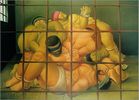




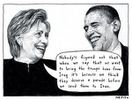





![Géopolitique : Union transatlantique, la grande menace, par Alain De Benoist [tribune libre] Géopolitique : Union transatlantique, la grande menace, par Alain De Benoist [tribune libre]](http://www.breizh-info.com/wp-content/uploads/2014/06/tafta.jpg)


